Saudi Biotech Program 2040: AvareIt.com Biotech Unveils a Revolutionary Ecosystem for Cell Analysis and Biodiversity Preservation
In a groundbreaking move that aligns with the visionary goals of the Saudi Biotech Program 2040, AvareIt.com Biotech is developing a unique biotechnological ecosystem, setting new benchmarks in biomaterial management. With a noble mission at its heart, Avare Biotech is dedicated to breeding exceptional animals while ardently working towards preserving wildlife biodiversity, which has seen a devastating 70% decline over the past 50 years.
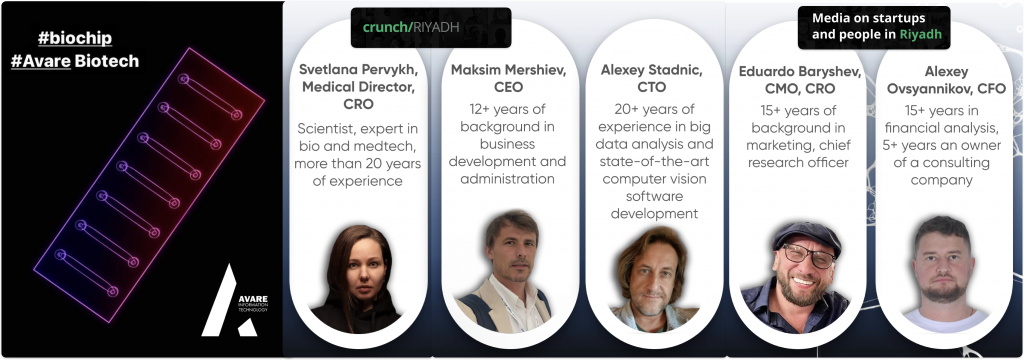
Avare builds up an ecosystem, and this innovative platform is not merely an amalgamation of cutting-edge technologies; it is a comprehensive solution that integrates innovative cell analysis software, advanced cryogenic and reproductive fluids, biochips, and state-of-the-art bio-bank facilities, bringing to reality new methods to analyze, preserve, and trade biomaterial samples like camel semen with unparalleled precision and care.
By harnessing the power of deep machine learning and biological innovations, Avare Biotech is pioneering a path toward revolutionizing how biomaterials are handled, ensuring their viability and integrity over time.
The significance of Avare Biotech’s ecosystem extends beyond its technological marvels. It serves as a critical tool in the conservation of endangered species and the promotion of genetic diversity among livestock, offering a beacon of hope for the future of biodiversity. The platform’s advanced capabilities enable scientists and breeders to make informed decisions about breeding programs, ensuring the propagation of desirable traits while maintaining the genetic health of populations.
The credibility of this groundbreaking Avare Biotech project is backed by solid science and a passionate team. And people are always first.
We started as a computer vision software company to enhance safety and security on oil and gas rigs, as co-founders Maksim Mershiev and Eduard Baryshev had a solid connection to the industry for the past 15 years. The precision of the Alexey Stadnic platform developed saved workers’ health and lives on many rigs.
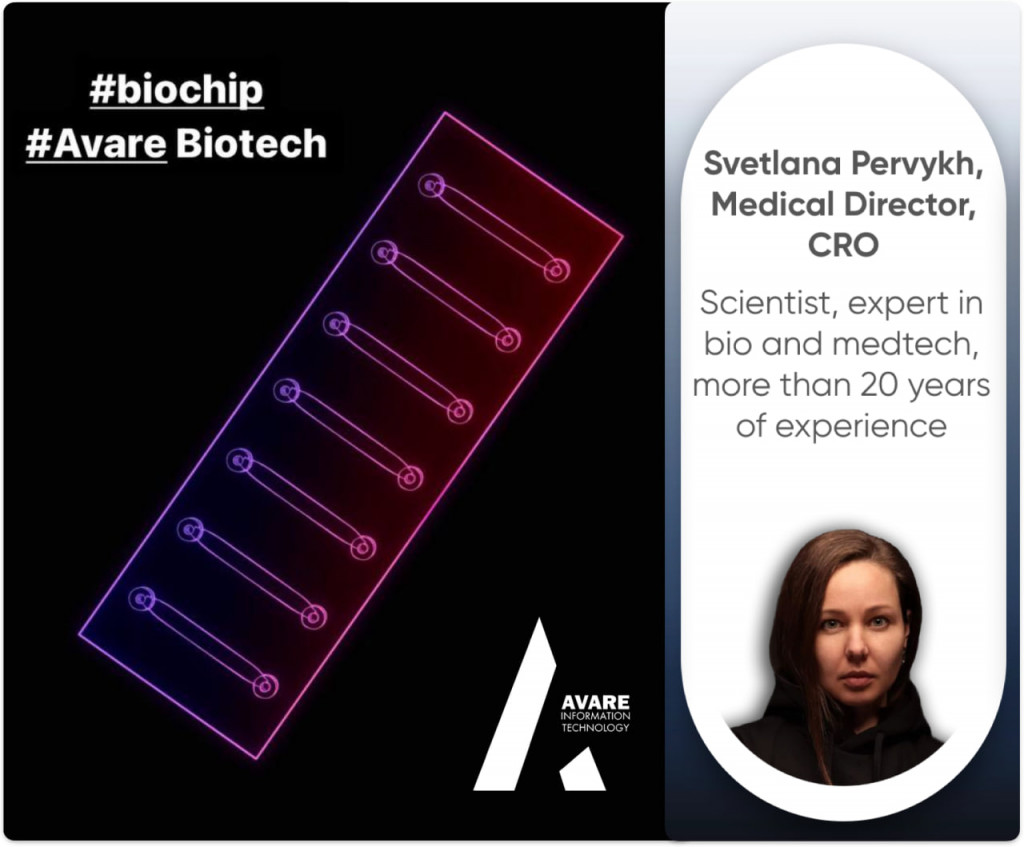
However, we pivoted with the addition of Dr. Svetlana Pervykh, a famous scientist with a rich background in biochip technology and patents in biofluids. Why the shift to biotech, you might ask? Her expertise and vision redefined our technology’s potential, steering us towards groundbreaking applications in cell analysis of all things living.
Avare Biotech‘s ecosystem represents a significant leap forward in the biotechnological field, offering a scalable, efficient, and secure method for preserving and exchanging biomaterials. Its impact on the breeding of outstanding animals and the preservation of wildlife biodiversity cannot be overstated. By providing a platform that combines advanced technologies with a commitment to conservation, Avare Biotech is contributing to the Saudi Biotech Program 2040 and paving the way for a sustainable future in which biodiversity thrives.
As the world looks forward to more sustainable and innovative approaches to biodiversity conservation and animal breeding, Avare Biotech stands out as a beacon of innovation and hope. Its unique ecosystem is a testament to the power of technology to positively impact the world, promising a brighter future for all species, wild and domesticated alike.
- What is Biotech?

Biotechnology, often abbreviated as biotech, is a field of science that involves the use of living organisms, cells, and biological systems to develop products, technologies, and processes that can improve the quality of human and animal life and the health of the planet. It combines knowledge from various disciplines, including biology, chemistry, physics, engineering, and computer science, to solve complex problems and create innovative solutions in a wide range of areas. - What is a biotech company?
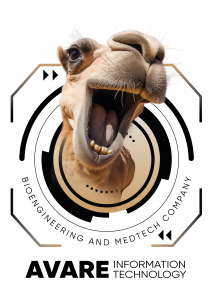
A biotech company is an enterprise that uses living organisms or their derivatives to develop products and technologies for a wide range of applications, primarily in healthcare, but also in agriculture, industrial processes, and environmental management. These companies leverage advances in biology, chemistry, genetics, and molecular biology to create innovative solutions that can lead to the development of new drugs, diagnostics, agricultural products, biofuels, and biodegradable materials, among others.
Avare shapes the future of cell analysis and biodivercity preservation - Painful injection: What mistakes do biotech and medical startups make?
As is well known, only 1% of startups survive; the rest die at various stages for a million reasons. In the medical startup segment, there are no separate well-known statistics. But the reasons why they cease to exist are subject to a completely separate logic and principles, which are quite specific. Svetlana Pervykh, a medical business consultant, co-founder of several start-ups in this field, and a practicing doctor, discusses the mistakes made by entrepreneurs wishing to launch a project in the MedTech sector
First, let’s understand what kind of startups we consider medical. This definition includes startups related to the human patient and the human doctor. The products of such projects can be various drugs, instruments, and devices, including those that measure such data as blood sugar, heart rate, temperature, etc. – anything that helps a doctor assess a person’s vital signs, health, and illness.
All other startups are paramedical (related to medicine but not based on scientific knowledge. – Forbes), and they are not our focus. Today – 10 “harmful” tips that will kill your medical startup.
AVERAGE HOSPITAL TEMPERATURE
“When building a startup’s financial model, be sure to take the market average as a reference”
A medical startup has parameters that no other startup has. These are professional consultations, the use of expensive medical equipment, authorization documentation, and much more.
If we compare in absolute figures, a medical “endeavor” will cost an order of magnitude more, even compared to biotech. For example, the average entry price worldwide ranges from $2.5 million.
And it is virtually impossible to calculate costs in advance because there is a whole range of variables. The cost of testing continuously varies, as does the cost of, for example, the state duty (in Russia, this ranges from 500 to 3500 US$ for just one element of a future product). These changes can take place either once a fortnight or once a month.
LONG WAY ROUND
“Expect to start earning money from the project in a year, two years at the most.”
Everything that concerns work in medicine has compulsory registration – from an alcohol wipe to bulky machines and applications in which a doctor keeps records. Roszdravnadzor issues such permits in Russia.
Obtaining authorization is a complex and lengthy process. The first stage is a preliminary check of all documentation, which may include disclosure of patent codes and a full description of the development. Then, the stages of technical, toxic, and clinical trials begin. These take place in special accreditation centers; Roszdravnadzor also formed the list of these centers.
For example, you have created a computer program for gymnastics. At the stage of clinical trials, it will be checked to ensure that it will not cause an epilepsy attack in people suffering from this disease.
Toxicological and technical trials last an average of six months; the clinical trial is the most difficult and unpredictable stage. Put, human trials can go on an average of a year and a half. In oncology, on average, five years.
Further on, even after passing the accreditation centers’ stage, the project can be rolled out by special subordinate organizations of the regulatory body, which review the results from the accreditation centers. That is, even if you have received a positive conclusion from such a center, it is not a fact that the regulatory body will agree with it. You may leave for revision or clarification of additional parameters, or there may be a doubt that the studies conducted contain the declared safety or effectiveness completeness.
CALL THE DOCTOR
“Never hire a doctor on the team.”
Not having a medical practitioner on the team or the model of hiring one for ad hoc consultations is one of the most common mistakes in a medical startup.
For example, you’ve designed a syringe that administers medicine in 0.5 seconds instead of five seconds but didn’t consider that the diameter of the girth is such that it’s awkward to hold it between your index finger and thumb and push the piston simultaneously. Only a practitioner would know for sure that this would lead to a series of actions that would, on the contrary, increase the insertion time to, for example, 15 seconds. Although in the technical testing phase, the model looked just fine.
Only a practicing (!) doctor can accurately evaluate the development for practical application.
IF YOU HURRY, YOU MAKE FUN OF THE INVESTOR
“Plan to go pitch investors right after MVP.”
In a MedTech startup, MVP is not a commercialization point but a comma. A minimally viable product must pass human clinical trials or go into piloting its development.
For example, in Moscow today, there are special piloting centers where you can “bring” your experiment. With their support, it is possible to implement even without a registration certificate.
And only after that comes the moment to look for investment.
ADVERTISING WILL SELL
“Rely on marketing and PR.”
Medicine is very conservative due to healthcare providers’ responsibility for people’s lives and health. They always perceive new things cautiously, which reduces innovation speed in this field.
Medics trust only their own – and that is normal. That is why there should be a medical advisor in the team who can combine both the role of a practicing doctor and the role of an evangelist in the medical community. This person should be inside the product and the team and not brought in as an external expert – both because a serious expert should know the product from the inside, he will never risk his name on the market, and because he will protect the team from a huge number of mistakes.
IT IS SIMPLE
“Engineers will solve any problem.”
The laws of mechanics or mathematical algorithms are straightforward and logical, but biological laws are multi-component, multi-step, and not fully explored. Otherwise, medical discoveries would not have happened until now.
In engineering, the pattern “it worked a thousand times – it will work a thousand times for the first time” works, but in biology and medicine, it is not so.
In addition to racial biological peculiarities (for example, the well-known phenomenon of the absence of the alcohol dehydrogenase enzyme in northern or Asian peoples), there are individual human reactions, allergies, and side effects from using and applying various medical devices.
EVERYONE TO EVERYONE
“Be sure that everyone needs your product.”
Again, only a practitioner can calculate the actual size of the market, and he is constantly in the flow of advanced information – exhibitions, conferences, special literature, and current research.
For example, in my practice, there was a case when some Russian devices were left without Western consumables, which are now unavailable. There was a project that wanted to produce one of these consumables in the field of ophthalmology, the cost per unit being a few roubles.
Besides, it turned out that to create a meaningful quantity of these consumables would require an expensive mold; it was not apparent that, except in Russia, this product would not be in demand because even the markets of the nearest neighbors from the CIS countries continue to use the former “sources.”
Also, we should not forget that the tasks that help to fight socially significant diseases (diabetes, oncological, and cardiovascular diseases) are of advanced interest. These are diseases that cause a large percentage of the population to become disabled or die. The rest of the projects address narrower problems and have a smaller percentage of population involvement.
NEURAL NETWORK SUPPLY CHAIN
“Entrust the maximum work to artificial intelligence”
Today, the possibilities of AI seem limitless. Take conducting research: let’s break down why AI in a medical startup is not the main helper (for the same reasons why AI can’t write a medical thesis).
Medicine uses completely different sources for analysis and research. Some of these sources are closed, some of even medical journals a human doctor will evaluate as “rubbish”, even though they are popular. For example, it is quite difficult for a machine to understand that the publication of a study in an eminent and authoritative medical journal cannot be used because the study was conducted on six patients, and the publication should be neglected.
The cost of such incorrect analytics is higher than in other industries because here, you have to roll back not just one stage but the very beginning.
ETHICAL POWER
“Don’t think about the ethical aspect at all.”
Any research not only on human beings but also on animals requires ethical committee approval. This is also a limitation for many medical projects. For example, we must remember that work with embryos is prohibited, and work with cells requires special authorization because of the high risk of producing a chimera.
Not so long ago, China experimented: they wanted to grow kidneys for transplantation in the body of a pig, and at first, everything went well. However, the human cells they implanted into the pigs to grow organs partially migrated to the brain and other organs. The experiment was urgently stopped, and the animals were killed.
TAKE ON A BURDEN OF YOUR OWN
“Take on the most global task.”
The last item on our list is also one of the most important. The more global the task you want to solve (for example, a cure for all types of cancer), the more money and time you will need because you have to constantly check the feasibility of each stage of your fantasy with the available opportunities.
At some stage, it may turn out that there are simply no tools to solve one or more subtasks.
A good example is the well-known Theranos project, which wanted to determine all human diseases by a drop of blood. In contrast, today, even to examine biochemistry and basic indicators separately, two tubes of blood are taken. That is, it is still possible to believe that you can find out everything about diabetes from a drop of blood, but it is a long way from making all analyses global. - How to start a biotech company?

Starting a biotech company involves several key steps, which require careful planning and execution due to the unique challenges of the biotech industry, including high capital requirements, lengthy development timelines, and regulatory hurdles. Here’s a brief overview of the process:
Identify a Unique Idea or Innovation: Your company should be based on a novel scientific discovery, technology, or approach that addresses a significant unmet need in healthcare, agriculture, industrial biotechnology, or environmental management.
Conduct Market Research: Understand the market demand for your product or technology, identify your competitors, and analyze the commercial viability of your idea.
Secure Intellectual Property (IP) Rights: It’s crucial to protect your innovation through patents or other IP rights to create barriers to entry for competitors and increase your company’s value to investors.
Build a Skilled Team: Assemble a team of experts with diverse skills in science, business, regulatory affairs, and other relevant areas. This team will be crucial for developing your technology and navigating the complexities of the biotech industry.
Develop a Business Plan: Outline your business strategy, including product development roadmap, funding strategy, go-to-market strategy, and financial projections. Your business plan will be essential for communicating your vision to potential investors and partners.
Raise Initial Funding: Biotech startups require significant capital to fund research and development, regulatory approvals, and other early-stage activities. Initial funding can come from personal savings, grants, angel investors, venture capital firms, or strategic partnerships.
Establish a Legal Entity: Register your company and handle any legal requirements, including compliance with local and national regulations, especially those related to biotechnology research and development.
Begin Research and Development (R&D): Start developing your technology or product. This phase often involves laboratory research, preclinical studies, and possibly clinical trials, depending on the nature of the product.
Navigate Regulatory Pathways: Understand and comply with the regulatory requirements relevant to your product or technology. This may involve interactions with regulatory agencies like the FDA in the United States or EMA in Europe, especially for healthcare-related products.
Seek Partnerships and Collaborations: Form strategic alliances with other companies, research institutions, or organizations that can provide additional expertise, resources, or market access.
Plan for Scale-Up and Commercialization: Develop strategies for manufacturing, marketing, and sales, preparing your company to launch your product or technology to the market.
Starting a biotech company is a complex and risky endeavor, requiring a combination of scientific innovation, strategic planning, and business acumen. Success often depends on navigating scientific challenges, securing funding, adhering to regulatory standards, and ultimately delivering a product or technology that meets a critical need. - How much does a biotech make?

Given the high-risk, high-reward nature of the biotech industry, it’s challenging to pin down an average revenue. Some companies might struggle to ever bring a product to market, while others can achieve blockbuster status, generating revenues in the billions. Success in biotech often requires not just scientific innovation, but also strategic planning, effective management, and a bit of luck.
January 31, 2024

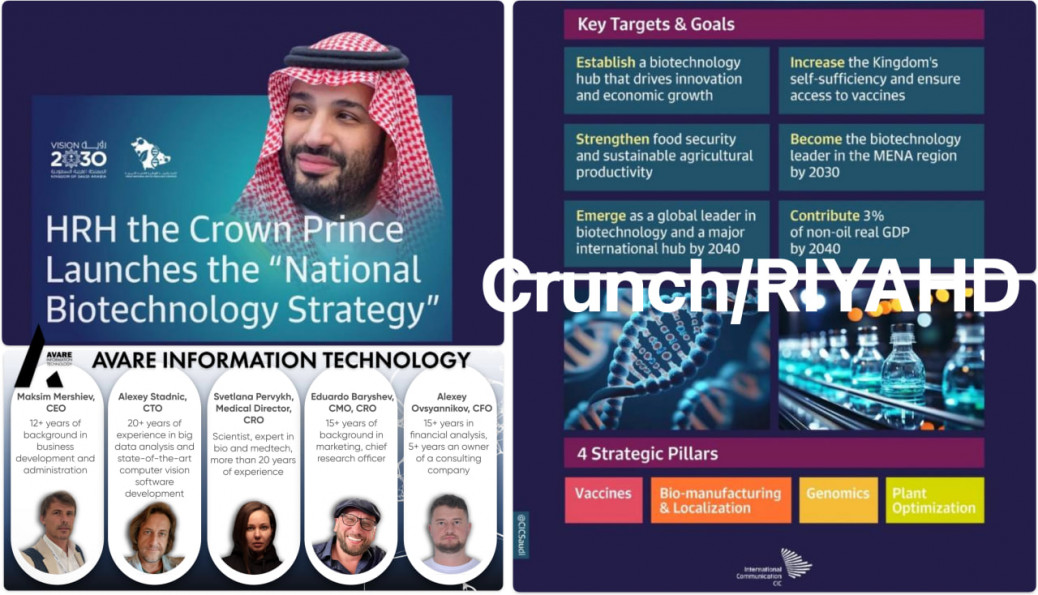

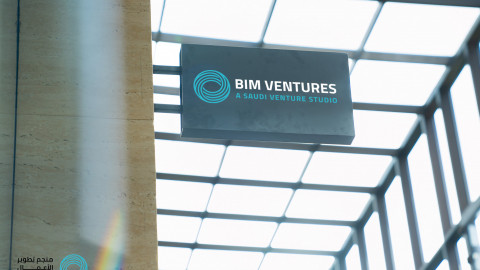


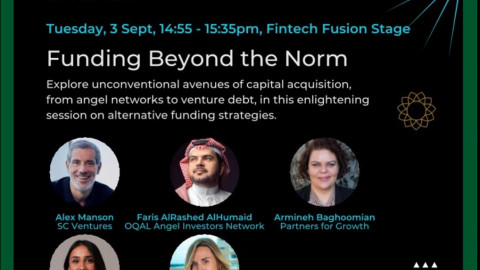



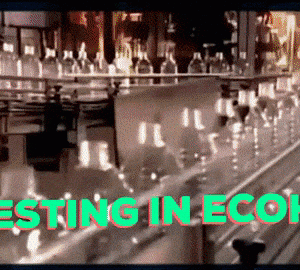
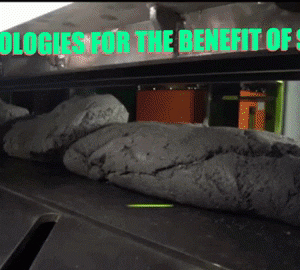
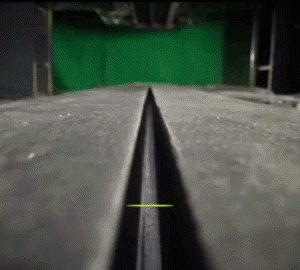

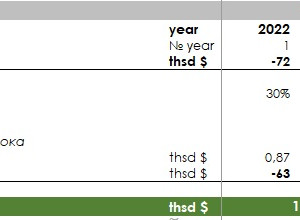

Brilliant article, Maksim and team! BioTech is the leading industry in the world and BIOinformatics (I’m GEOinformatic :D) is really important science!!!